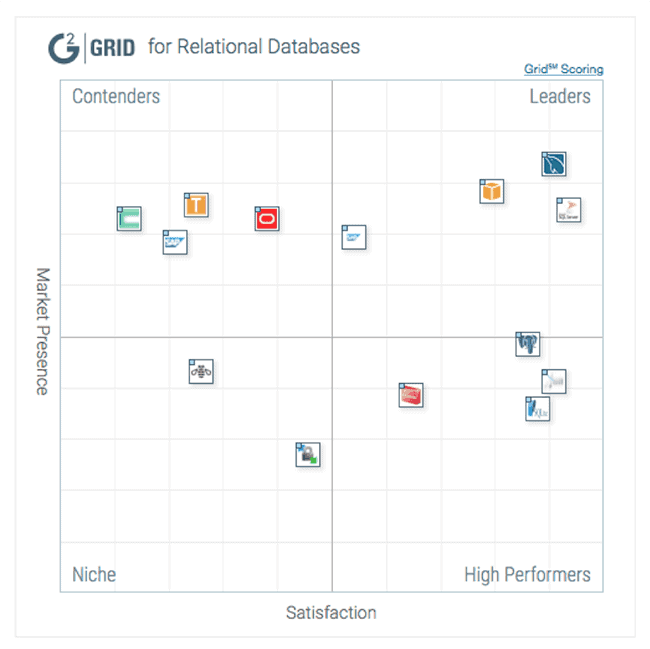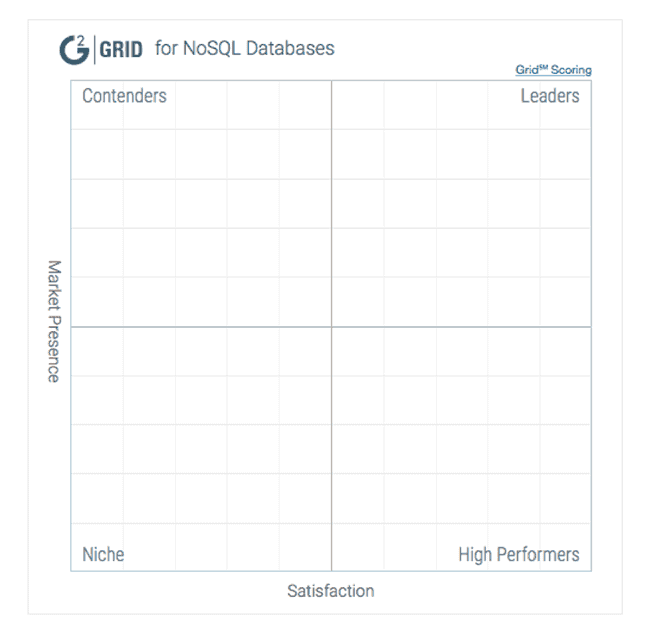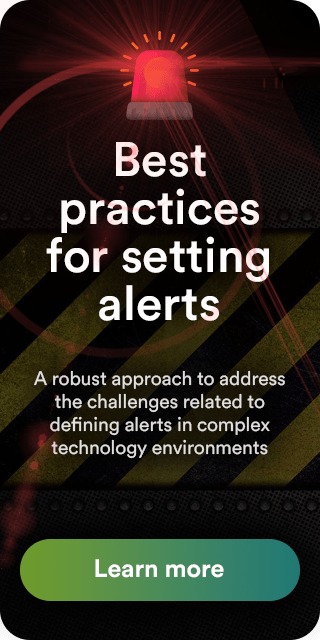Better databases
If you are going to hire a new support technician for your team, the most logical thing to do is to carry out a good selection process. The same applies to databases; it is advisable to investigate the pros and cons of each tool. Not only should we think about where our company is at the moment, but we should also evaluate the database thinking about where we want to be. The questions we should ask ourselves before choosing a database are the following:- How many customers do I want to serve?
- What size of data will I need to manage?
- Will I need to implement batch jobs that will access the database?
- What response time requirements do I need to provide to my customers?
- How will I scale my database as the number of customers and transactions increase?
- How will I monitor my database to avoid downtime?
- Do I need a relational database or a NoSQL one?
- How will the database behave in case of downtime? How does it behave when there is a problem?
Best Commercial databases
Today, the market is still dominated by DB2, SQL Server, Oracle and IBM. On Windows operating systems SQL Server tends to be the most common choice, while on Mainframe or Unix/Linux, Oracle and DB2 are the clear leaders.Microsoft SQL Server
It is a database developed by Microsoft and is only compatible with Windows systems. There are many expert profiles in SQL Server and it is not difficult to acquire. The integration with Microsoft Azure has greatly improved its flexibility and performance. It also allows to manage information from other servers improving its usability. Benchmark: https://www.microsoft.com/en-us/server-cloud/products/sql-server-benchmarks/industry.aspxOracle
Oracle is a database that can run on almost any operating system. Oracle has an abundance of profiles with experience in this technology and a large number of tools for administration and monitoring. Benchmark de Oracle: https://www.oracle.com/us/solutions/performance-scalability/index.htmlIBM DB2
It is the second most used database in Unix/Linux environments after Oracle. It is clearly an undisputed winner in Mainframe. There are professional profiles for DB2 but not as much as for Oracle. On the other hand, the DB2 Mainframe profile does not have to know how to move in DB2 linux/unix. Benchmark de DB2: https://www-01.ibm.com/software/data/db2/performance.htmlTeradata
It stands out from other types of databases due to its storage and data analysis capacity. It is often used in large Big Data installations.SAP Sybase
A decade ago it was one of the most successful databases; today it is less widespread, but still stands out for its scalability and performance.Informix
During 1990, the company Informix was a very popular database system. However, in 2000 it had several management stumbles, weakening the company; it eventually sold the rights to IBM, including the brand, its plans and the database. As of today Informix and Ascential have ceased to exist as such, as IBM split the tools and applications; they are now part of IBM.Best Freely Distributed Relational Databases
Within the free relational databases, there are three that stand out above the rest: these are MySQL, Maria DB and PostgreSQL. All of them have several benefits in common: the existence of a powerful community, the possibility of viewing and modifying the code as needed and the price they have, since they are free.
NoSQL Databases
NoSQL databases have evolved to respond to different problems and, although they are part of the same group, they have many differences between them. Currently we can divide them into four groups by their way of modeling data.NoSQL Key-Value Oriented
It is the simplest data model and is ideal when accessing data by key. The difference of this type of database lies in the possibility of storing data without any predefined schema. They are usually very efficient for reads and writes; they are also designed to scale massively achieving a very fast response time. The data are usually stored in complex structures such as BLOB. Some examples of databases of this type would be the following:- Redis: Free software
- Riak:Stands out for its ability to be a Key-value database, document storage and searchable.
- Oracle NoSQL.
- Microsoft Azure Table Storage.
Document-oriented NoSQL
Documents are stored supporting different formats (JSON, XML). Schemas can be changed without stopping the databases; developers can insert indexed documents and have access through the database engine. Its flexibility makes it one of the most versatile tools; Mongo DB and Couchbase Server stand out.Mongo DB
It is one of the most popular databases today. It has the possibility of working with structured and unstructured data. It stands out for its great scalability and performance. It is also one of the databases with more experienced profiles, facilitating the learning and use process. It allows working by key-value pairs and accessing different parts of the stored data. Mongo DB does not support atomicity in operations and guarantees eventual integrity. Changes will be replicated across all nodes, but there is no guarantee that all nodes will have the same data at the same time.Couchbase Server
Free database created in the Apache project. It does not guarantee 100% data integrity. It stands out for its large administration console, with which it is possible to access a large number of data in a very simple way.Mark Logic Server
This database stands out from the previous ones for its data integrity and compatibility with XML, JSON and RDF. Supported systems: Windows, Solaris, Red Hat, Suse, CentOS, Amazon Linux and Mac OS.Elastic Search
Other databases of note are RavenDB, Apache Jena and Pivotal GemFire.
Non-SQL Column-Oriented Databases
These databases are very similar to relational data tables, where you can map keys to values and group them into structures. They are used in environments where there is little typing and there is a need to access multiple columns of many rows. They are very useful in event processing and analysis, content management and data analysis.Apache Cassandra
This database was created by Facebook and is now freely distributed. It is highly recommended for managing databases with large amounts of data. It currently has an Enterprise version of Cassandra called Datastax Enterprise. Supported data: ASCII, bigint, BLOB, Boolean, counter, decimal, double, float, int, text, timestamp, UUID, VARCHAR and varint.Benchmark: https://vldb.org/pvldb/vol5/p1724_tilmannrabl_vldb2012.pdf
Apache Hbase
It was designed to support large numbers of real-time read and write accesses to large amounts of data. One of its advantages is mail over Hadoop and over the Hadoop file system.Non-SQL graph databases
This model is focused on entities and their relationships. It uses graph theory to link databases. Every element points to its adjacent element. These databases are recommended if your data is highly related, such as in social networks, fraud detection, real-time recommendations, etc. Here, the database should be normalized where each structure will have one column and each relation two.Neo4j
Supports data integrity and high availability and cluster scaling. It also has a good administration panel.Infinite graph
It is not freely distributable. Supported systems: Mac OSx, Linux and Windows. Benchmark: can be ordered from Objectivity.
Hybrid Model
More and more companies are offering hybrid solutions in which multiple database engines are used to support multiple NoSQL models and even relational engines. For example, CortexDB, Foundation DB and Orient DB offer multiple NoSQL models. IBM has extended its DB2 database to offer the ability to use NoSQL databases with BLU Acceleration. IBM DB2, in its extended version, allows data to be stored in XML, JSON and network storage.As a Service Databases
As a Service databases are different from the rest because they offer their services in the cloud. You only have to read and write your data using services offered by the provider. Probably, over time, this is going to be one of the most demanded databases because of its ease of use.Amazon SimpleDB
Database that offers a simple web services interface; it is used to store and create various data sets. If you want to create simple database accesses, Amazon SimpleDB can be a good choice. Data is stored as text and structures are generated by value parameter pairs. In addition, the data is automatically indexed, making it easy to search for information. There is no benchmark.List of Pandora FMS modules for Database Monitoring
| Database | Modules and plugins |
| Oracle | Oracle Monitoring |
| DB2 | DB2 Monitoring |
| SQL Server | SQL Server Monitoring |
| Teradata | Teradata Monitoring Pandora FMS Enterprise |
| SAP Sybase | Sybase Monitoring |
| Informix | Informix Monitoring |
| MySQL | Monitoring MySQL active connections MySQl Cluster MysQL Monitoring MySQL Performance MySQL Plugin MySQL Server Advanced Monitoring |
| Postgre SQL | Perl PostgreSQL Monitoring PostgreSQL Plugin Monitoring Postgre SQL Plugin Monitoring PostgreSQL Plugin Agents |
| Mongo DB | MongoDB Monitoring Module MongoDB Monitoring Plugin Mongo DB |
| Couchbase | Monitoring Couchbase with Pandora FMS Enterprise |
| Mark Logic Server | Monitoring MarkLogic with Pandora FMS Enterprise |
| Elastic Search | Monitoring Elastic Search with Pandora FMS Enterprise |
| Redis | Monitoring Redis with Pandora FMS Enterprise |
| Riak | Monitoring Riak with Pandora FMS Enterprise |
| Microsoft Azure Table Storage | Monitoring Azure with Pandora FMS Enterprise |
| Apache Cassandra | Monitoring Apache Cassandra |
| Apache Hbase | Monitoring Apache hbase |
| Neo4j | Monitoring Nwo4j with Pandora FMS Enterprise |
| Infinite graph | Monitoring Infinite Graph with Pandora FMS Enterprise |
| Amazon SimpleDB | Monitoring Amazon SimpleDB with Pandora FMS Enterprise |
Don’t hesitate to send your questions, the team behind Pandora FMS will be happy to help you!
Pandora FMS’s editorial team is made up of a group of writers and IT professionals with one thing in common: their passion for computer system monitoring. Pandora FMS’s editorial team is made up of a group of writers and IT professionals with one thing in common: their passion for computer system monitoring.
















